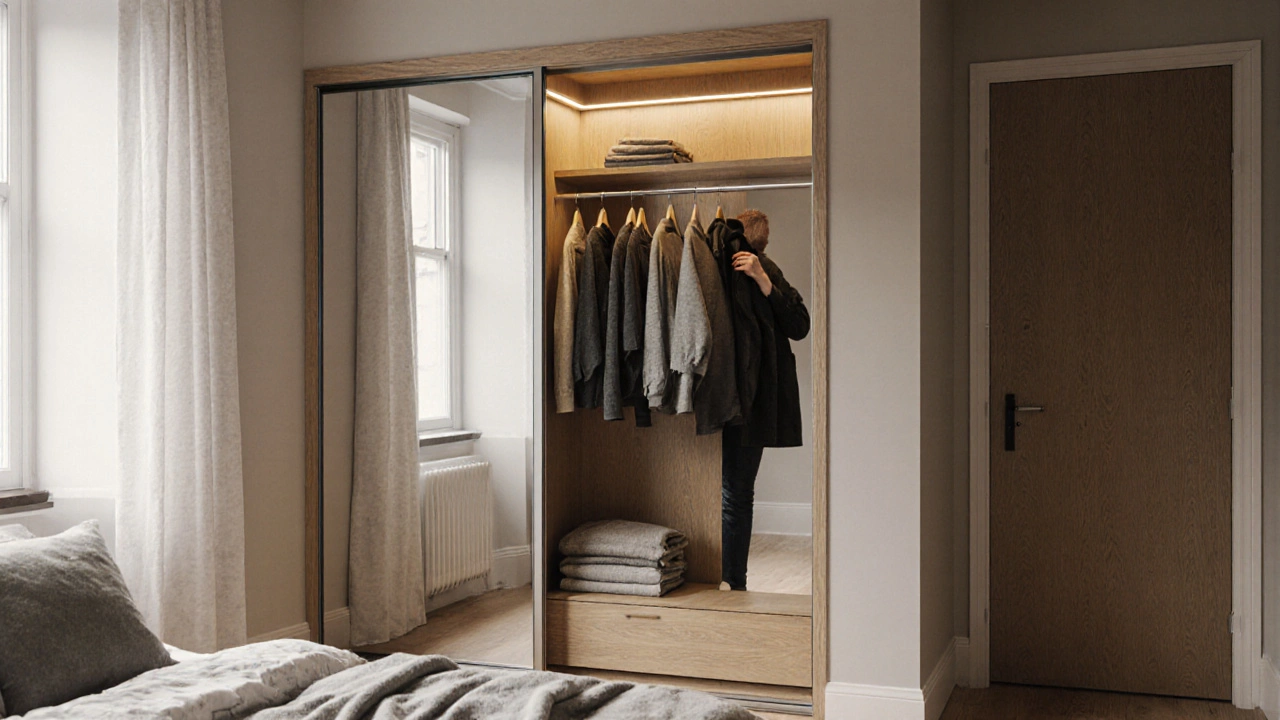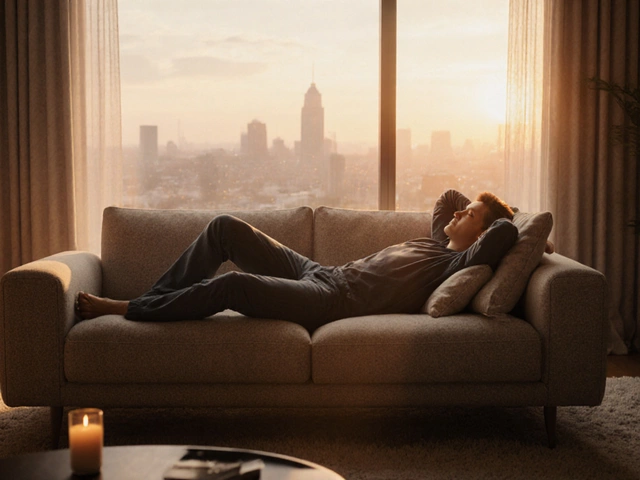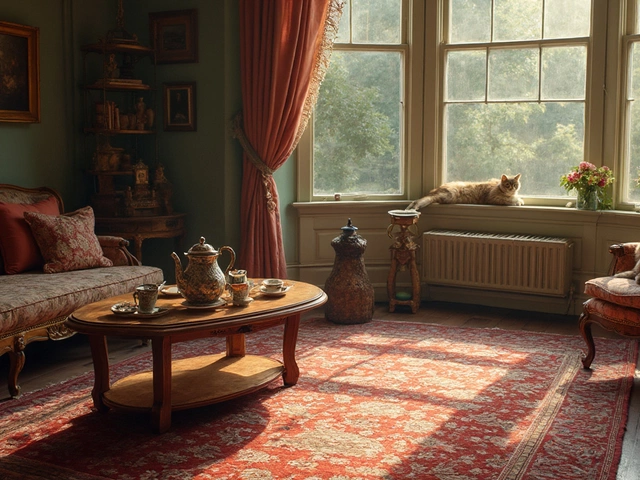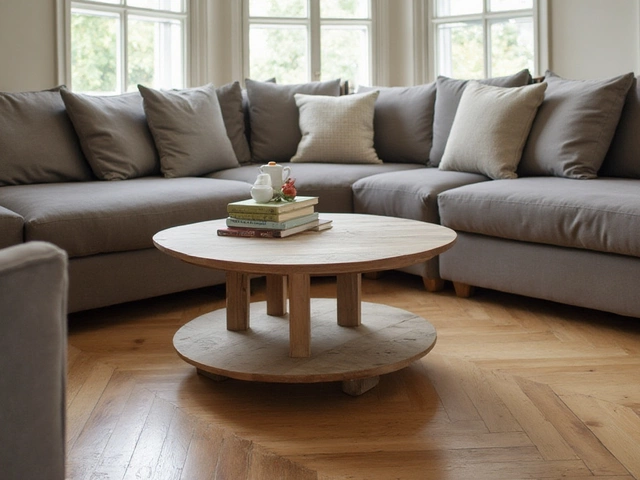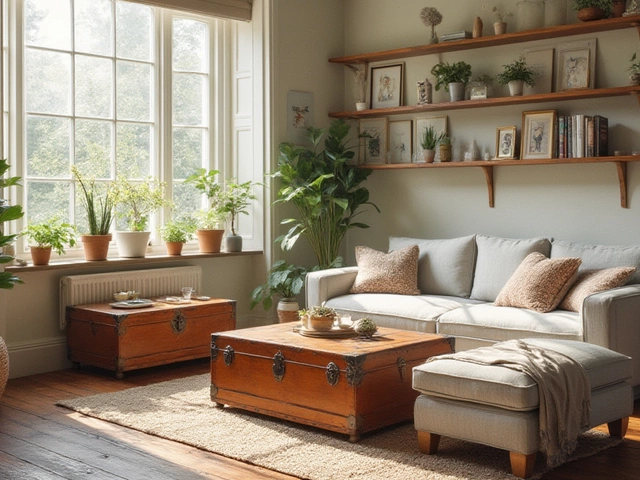Wardrobe Size Calculator
Your Room Dimensions
Your Storage Needs
Enter your measurements and preferences to see recommended wardrobe dimensions.
A wardrobe is a freestanding piece of furniture designed primarily to store clothing and accessories. Unlike a built-in closet, which is part of a room’s structure, a wardrobe is movable and typically includes hanging space, shelves, drawers, and sometimes mirrors or doors. It’s one of the oldest forms of clothing storage still in widespread use today, evolving from simple wooden chests in the 16th century to today’s modern designs that blend function with interior style.
What Makes a Wardrobe Different from a Closet?
People often use the words ‘wardrobe’ and ‘closet’ interchangeably, but they’re not the same. A closet is a fixed space built into a wall, usually with lighting, rods, and shelves integrated into the home’s architecture. It doesn’t move. A wardrobe, on the other hand, is a standalone unit you can buy, assemble, and rearrange as needed. You can roll it across the room, take it with you when you move, or even repurpose it in another room.
For example, if you live in an apartment without built-in storage, a wardrobe gives you the same functionality as a closet-without the renovation. In older homes or European-style interiors, wardrobes are often the default choice because walls aren’t designed for recessed storage. In modern homes, they’re popular for their flexibility and design variety.
Key Parts of a Typical Wardrobe
Most wardrobes share the same basic components, though their layout can vary:
- Hanging rods - For shirts, dresses, coats, and pants. Usually adjustable to fit different garment lengths.
- Shelves - Used for folded clothes like sweaters, jeans, or linens. Some have adjustable heights.
- Drawers - Ideal for underwear, socks, accessories, or items you don’t want exposed.
- Doors - Can be hinged, sliding, or even open-frame. Sliding doors save space in smaller rooms.
- Mirror - Often attached to the inside or outside of the doors for quick outfit checks.
- Interior lighting - Found in higher-end models to help you see clothes clearly in low light.
Some wardrobes even include pull-out tie racks, shoe compartments, or jewelry trays. The best ones are designed with your specific storage needs in mind-not just generic space.
Types of Wardrobes You’ll Find Today
Not all wardrobes are created equal. The market offers several styles based on design, size, and function:
- Sliding door wardrobes - Perfect for small bedrooms. They don’t swing open, so they save floor space. Common in modern apartments.
- Double door wardrobes - Traditional hinged doors that open outward. Offer more interior access and are often deeper, making them great for bulky coats.
- Walk-in wardrobe units - These aren’t full rooms, but modular systems that mimic walk-in closets. They’re tall, wide, and often used in master bedrooms.
- Corner wardrobes - Designed to fit into unused corners. Great for oddly shaped rooms.
- Portable or collapsible wardrobes - Made from fabric or lightweight materials. Often used in dorms, rentals, or temporary living situations.
Materials vary too: solid wood lasts decades, engineered wood is budget-friendly, and metal or glass frames give a contemporary look. The material affects durability, weight, and price.

Why Do People Choose Wardrobes Over Built-In Closets?
There are real, practical reasons why wardrobes remain popular-even in homes with closets:
- Flexibility - You can change the layout, move it to another room, or upgrade it later without remodeling.
- Cost - Installing a custom built-in closet can cost $1,500-$5,000. A good-quality wardrobe starts at $200.
- Portability - Renters can’t modify walls, but they can bring a wardrobe with them when they move.
- Design control - You pick the style, color, and finish. No need to match your home’s existing cabinetry.
- Space optimization - In homes with low ceilings or awkward layouts, a wardrobe can be tailored to fit perfectly.
According to a 2024 survey by the Home Furnishings Association, 68% of renters in urban areas use freestanding wardrobes as their primary clothing storage. That number jumps to 82% among people under 35.
How to Choose the Right Wardrobe for Your Needs
Not every wardrobe works for every space. Here’s what to consider before buying:
- Measure your space - Check width, height, and depth. Leave at least 24 inches of clearance in front for doors to open fully.
- Think about what you store - If you own lots of long dresses or coats, you’ll need a taller hanging section. If you fold most things, prioritize shelves and drawers.
- Consider door type - Sliding doors are better for tight rooms. Hinged doors give better access and can hold heavier items.
- Check build quality - Look at the joints, drawer slides, and door hinges. Metal slides and solid wood frames last longer than plastic or particleboard.
- Think ahead - Will you need more storage in 2 years? Choose a model with expandable options or modular add-ons.
One common mistake people make is buying a wardrobe that looks nice but doesn’t fit their clothes. A 30-inch deep wardrobe might seem spacious, but if you hang winter coats, you’ll need at least 24 inches of depth just for the hanging space. Measure your longest garment before you buy.
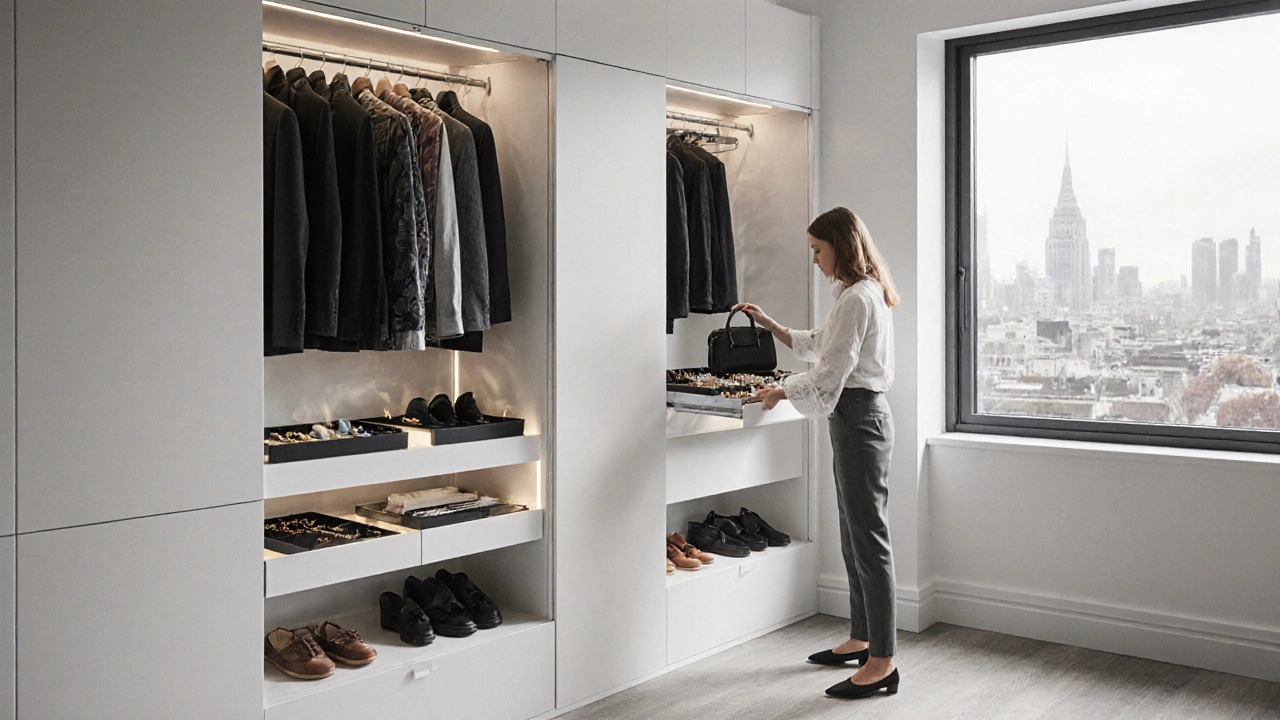
Wardrobes Around the World
Wardrobe design varies by culture and climate. In Scandinavian homes, you’ll find light wood wardrobes with clean lines and minimal hardware. In Japan, tall, narrow wardrobes called ‘tansu’ are stacked vertically to save floor space. In India, large wooden wardrobes often include compartments for saris and traditional garments. In the U.S., walk-in wardrobes became popular in the 2000s as homes got bigger and storage became a status symbol.
These differences show that a wardrobe isn’t just a box for clothes-it’s shaped by lifestyle, climate, and cultural habits. What works in a New York studio might not suit a rural farmhouse. The best wardrobe is the one that fits your life, not just your room.
Common Myths About Wardrobes
There are a few misconceptions that lead people to make bad choices:
- Myth: Wardrobes are outdated. Truth: Modern wardrobes are sleek, customizable, and often smarter than built-ins-especially with features like LED lighting, motion sensors, and anti-slip hangers.
- Myth: They take up too much space. Truth: Many wardrobes are designed to be wall-mounted or corner-friendly. Some even double as room dividers.
- Myth: They’re only for bedrooms. Truth: Wardrobes are used in hallways, dressing rooms, home offices, and even laundry rooms for storing towels and ironing supplies.
Wardrobes aren’t relics-they’re evolving tools for modern living. The right one can simplify your morning routine, reduce clutter, and even add style to your space.
Is a wardrobe the same as a closet?
No. A closet is built into the wall and fixed in place, while a wardrobe is a freestanding piece of furniture. You can move, replace, or upgrade a wardrobe without changing your home’s structure.
What’s the best material for a wardrobe?
Solid wood is the most durable and long-lasting, but it’s also the most expensive. Engineered wood like MDF or plywood offers good strength at a lower price and works well for most homes. Avoid particleboard if you want something that lasts more than 5-7 years.
Can I use a wardrobe in a small apartment?
Yes-sliding door wardrobes are ideal for small spaces because they don’t swing open. Look for models that are tall and narrow to maximize vertical storage without taking up floor space. Some even have mirrored doors to make the room feel larger.
Do wardrobes need to be assembled?
Most wardrobes come flat-packed and require assembly. High-end models may be delivered fully built. Assembly usually takes 1-3 hours with two people. Check if the manufacturer includes tools and clear instructions.
How do I clean and maintain a wardrobe?
Wipe down surfaces with a damp cloth and mild soap. Avoid harsh chemicals, especially on wood finishes. Lubricate sliding tracks or hinges once a year with silicone spray. Keep the inside dry to prevent mildew, especially in humid climates.
